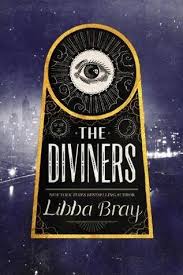Palacio, R. J. Wonder. New York: Alfred A. Knopf, 2012. Print.
image from: http://media.npr.org/assets/bakertaylor/covers/w/wonder/9780552565974_custom-b8367e7a41f7c527051b3b8024b7924b3e0a113c-s6-c30.jpg


My Thoughts
I saw R. J. Palacio at TLA (even took her picture), but thought, "That's a lower grade book. I haven't read it. I'm not interested." YIKES! I wish I had been interested enough to get her autograph. This was a wonderful read, and I can't wait to pass it on to my daughter.
Wonder is the story of August Pullman. He is starting public school for the first time. He's in the 5th grade. He has been home schooled until now because he has had so many surgeries. There is something not "normal" about his face. He's a genetic abnormality--only 1 in 4 million have this combination of syndromes."August had what seemed to be a 'previously unknown type of mandibulofacial dysostosis caused by an autosomal recessive mutation on the TCOF1 gene, which is located on chromosome 5, complicated by a hemifacial microsomia characteristic of OAV spectrum'" (Palacio 104). As he introduces himself to the reader, he explains, "I won't describe what I look like. Whatever you're thinking, it's probably worse" (Palacio 3). August has a great sense of himself and others' reactions to him. He takes it all in stride. He sees even when others pretend not to see him.
The story is divided into 8 parts, with August (Auggie) being the narrator for most of the book. However, we do get insight into other characters' perspectives. There are so many themes in this book that I hope when my daughter does read it, she picks up on a few of them.
Be a true friend--always.
Don't be one way around certain people & a different way around others.
"You don't have to mean to hurt someone to hurt someone" (Palacio 137).
The actions of the characters were realistic, heartbreaking, and hopeful. As a reader, I was rooting for Auggie and felt the disappointment he felt, especially the Halloween episode. I cheered for Summer and her "blindness" in being Auggie's friend.
At one "heavy" point in the novel, Auggie is talking to his mom about heaven. He wants to know how people recognize each other. His mother responds, "'They just feel it. You don't need your eyes to love, right? You just feel it inside you. That's how it is in heaven. It's just love, and no one forgets who they love'" (Palacio 227). Well said, Mom!
The title reference is on page 310.
I know at TLA this year, if there are tons of people talking about a certain book, even if it is a "lower grade" book and I haven't read it, I will pay attention and get into the autograph line.

